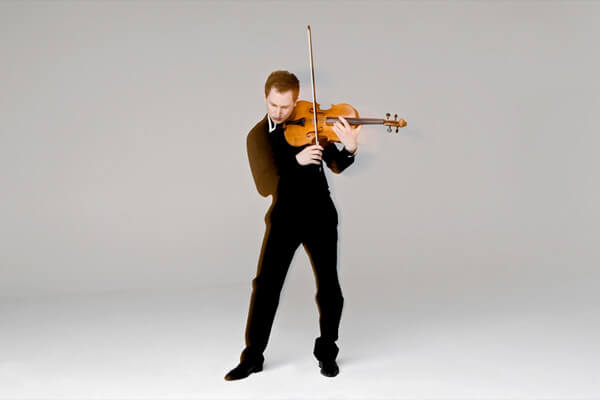 am·phi·go·ry, noun [ˈamfəˌgōrē, amˈfigərē]
am·phi·go·ry, noun [ˈamfəˌgōrē, amˈfigərē]
a nonsense verse or composition
a rigmarole with apparent meaning which proves to be meaningless (Merriam-Webster)
It is a rare reward of live music: a concert that is not only full of beauty in the moment, but, for days after, sends one scrambling to the furthest corners of the internet to try and catch all of the influences and layers that the composers and interpreters have packed into one evening. Monday, November 5, 2012 at the Vienna Concert House, with the ORF Radio Symphony Orchestra of Vienna under Susanna Mälkki, was one such evening, part of the Wien Modern 2012. All four pieces on this concert used elements that could be familiar, but were put together in such a way as to make them decidedly unknown, an experience that was pleasingly disorienting.

The concert opened and closed with two pieces by György Ligeti (Lontano, 1967 and Atmosphères, 1961). These pieces are both examples of Ligeti’s “micropolyphony,” a technique derived from the idea of using a strict set of rules to govern the composition of polyphony, as set down by Palestrina in the 16th century. In writing micropolyphony, Ligeti kept the idea of continuously-moving, independent parts, but slowed each part down immensely, and used 20th century harmonic concepts. The result is static but always changing, gorgeous but highly dissonant, comfortingly familiar but completely new. In this performance, Mälkki kept the dynamics restrained throughout, letting the complex interaction of notes vibrate softly.
These gently grating pieces book-ended two energetic pieces by living composers. Remnants of songs… an Amphigory (2010) for solo viola and orchestra by Olga Neuwirth is in five exhilarating movements, full of fun ideas that are brilliantly orchestrated. Antoine Tamestit, viola, brought this series of character studies to life in a remarkable and flexible performance. The title Remnants of song refers to a book published by the scholar Ulrich Baer that examines modernity in the context of poetry by Baudelaire and Celan.
The first of the five movements, “Wanderer” began with the quiet viola meandering through the ghosts of cadenzas past. It was rudely interrupted by bombastic percussion. The orchestra then entered with a glut of references—many tonal fragments squished together into an uncomfortably tight space. Metres settled for two or three beats, only to be whisked away by the next swirl of a musical quotation. One giggled to recognize disjointed musical artifacts from a North-American childhood (which sounds the movie business borrowed from the European masters). The second movement is titled “Sadko,” the name of a Russian folk tale as well as an opera based on this story by Rimsky-Korsakov. Reminiscent of the sea-faring story, this section was a slower, tonal wash, not unlike the Ligeti pieces. From the sea of sound emerged odd items in the form of big brass chords. We heard the viola encounter a harmonica before the orchestra climaxed in what could be a big Rimsky-Korsakov orchestral moment, except for its undeniable oddness. The third movement sounded like an orchestra hitting the sea with a crash and sinking, as its title, “sank in the sea,” suggests. Lines started but went nowhere, with strings pecking heavily at low, resonant, Stravinsky-like chords. The fourth movement, depicting aimlessness and time without a goal, featured the hen-pecked viola soloist trying again and again to soar on a lovely, almost-Romantic melody, full of softness and subtlety, over top of more Ligeti-like washes. This reverie was rudely interrupted by heavy-handed statements in the orchestra, which afterward left the viola hanging to pick up the pieces. The last movement began with a slightly-lopsided snare drum solo (after Bolero?) and emerged into an uneasy waltz, the orchestra tripping loudly and then, once again, dropping out suddenly. The violist was left to play a few final, uneasy phrases before admitting defeat.

One is tempted to look for deeper meaning in this jumble of influences and bits of story line- elements of the Sadko story can be found in many of the movements, as can almost-quotations from much of the orchestral repertoire, but perhaps the composer’s title is meant to point out that there is no overarching statement made here.
Bernhard Gander’s choice of timbre in his piece Dirty Angel (2010) for flugelhorn, accordion and orchestra, harkens back to popular music of the last century. He used many familiar sounds: the basses slapping their strings, harmonicas, and rim shots and cymbals in the percussion section, all added together with the accordion and flugelhorn, gave one the feeling of a smoky jazz bar in Paris in the late 40s or 50s. He used many elements from this era’s popular music: chromatic lines in the accordion—like dissonant Charlie Parker licks—syncopated (off-beat) emphasis in many rhythms reminded one of Astor Piazzolla’s writing, and grace notes in the flugelhorn that jumped around like a stylized version of Dizzy Gillespie. But this dense orchestration left no room for the aural comforts of jazz: everything was dissonant, overlapping and packed together against hammering percussion, percussive string and brass writing. The familiar things in this piece were rendered alien. Perhaps the angel in the title had come to tell us that music is just a “rigmarole with apparent meaning which proves to be meaningless.”
—
Caitlin Smith is a Canadian composer, currently based in Vienna. Follow her on Twitter: @tinyalligator.
























